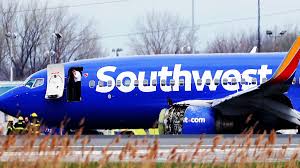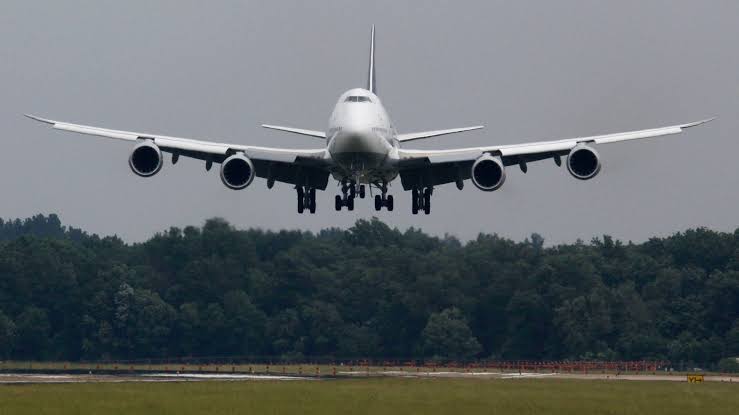Tension In The Air!! Southwest Airlines Passenger Coughed Out Liters Of Blood Before Breathing Stops
Tension in the Air: Passenger Dies Mid-Flight After Coughing Up Blood
A routine flight turned into a horrifying ordeal for passengers and crew when a man began coughing up large amounts of blood and later died mid-air. The chilling incident took place on a Lufthansa flight traveling from Bangkok, Thailand, to Munich, Germany. The emergency situation unfolded just after takeoff, leaving passengers in a state of panic and forcing the plane to return to its point of departure.
Sudden Onset of Symptoms
According to eyewitnesses on board, the 63-year-old German man appeared visibly unwell even before the plane took off. He was reportedly sweating excessively, had difficulty breathing, and looked pale and exhausted. His wife, who was traveling with him, informed the flight attendants that he had recently been hospitalized in Thailand and that his condition had not fully stabilized.
Despite signs that he might not be fit to fly, the man insisted on boarding the aircraft. Approximately 30 minutes into the flight, his condition suddenly worsened. Passengers reported hearing loud, violent coughing from the man, followed by the sight of blood being expelled from his mouth and nose. In a matter of seconds, the situation escalated into a full-blown medical emergency.
Emergency Response and Diversion
Flight attendants rushed to his side and called for medical assistance from anyone on board. Fortunately, a doctor was among the passengers and immediately began resuscitation efforts, including chest compressions and attempts to manage the bleeding. Unfortunately, all attempts to stabilize the man failed. The doctor pronounced him dead shortly thereafter, while his wife sat nearby in complete shock and devastation.
Given the gravity of the situation and the distress caused to passengers and crew, the captain made the immediate decision to divert the flight back to Bangkok. The aircraft landed safely, and emergency responders were on the scene to receive the body and assist affected passengers. The airline promptly arranged alternate flights for those traveling to Munich.
Possible Medical Causes
Although the official cause of death has not yet been confirmed, medical experts believe the man may have suffered from a ruptured esophageal varix—a serious complication often associated with chronic liver disease or cirrhosis. This condition can cause sudden and massive internal bleeding, which aligns with eyewitness accounts of blood rapidly exiting the man’s mouth and nose.
Other possible explanations include advanced tuberculosis, severe pneumonia, or a rare form of pulmonary hemorrhage. However, without a post-mortem examination, the exact cause remains speculative.
Impact on Passengers and Crew
The traumatic event left a profound impact on everyone aboard the flight. Witnesses described the cabin atmosphere as tense and chaotic. Some passengers screamed in fear, while others cried and tried to comfort the man’s wife. Many were visibly shaken, and some reported feeling unsafe or emotionally overwhelmed.
Cabin crew members, although professionally trained for emergencies, were also affected by the incident. Airline spokespersons later praised their quick response and composure under such distressing circumstances.
Psychological support was offered to both crew and passengers after the plane returned to Bangkok. Lufthansa made counseling services available and encouraged anyone affected to reach out for help.
Airline’s Response
Lufthansa confirmed the tragic incident in an official statement, expressing condolences to the family of the deceased. The airline emphasized that the flight crew followed all emergency procedures as outlined in aviation safety protocols. A spokesperson stated, “Our thoughts are with the family of the passenger. We are cooperating with local authorities and doing everything necessary to support those affected by this difficult situation.”
The airline also assured the public that all safety standards were upheld and that the plane was thoroughly cleaned and inspected before being put back into service.
Flight delays and disruptions caused by the unexpected diversion were handled with sensitivity. Passengers were offered meals, accommodation if needed, and help with rebooking.
Conclusion
This tragic mid-air death highlights the unpredictability of in-flight medical emergencies and the crucial role of onboard safety protocols. While airline crew members are trained to manage a wide range of emergencies, situations like this remind us of the limitations of even the best-prepared response teams in extreme medical cases.
It also raises important questions about medical screenings and whether passengers with recent serious health issues should be cleared to fly. In the future, airlines may need to implement more thorough health assessments for passengers who appear ill before boarding, especially on long-haul international flights.
As the investigation continues, the focus remains on supporting the affected passengers and honoring the memory of the deceased man. Lufthansa has expressed its ongoing commitment to passenger safety and emergency preparedness in the wake of this sobering event.






